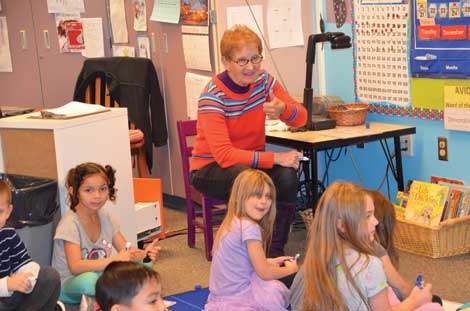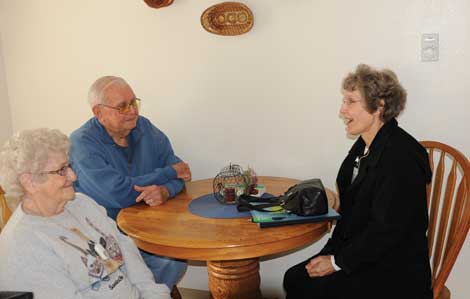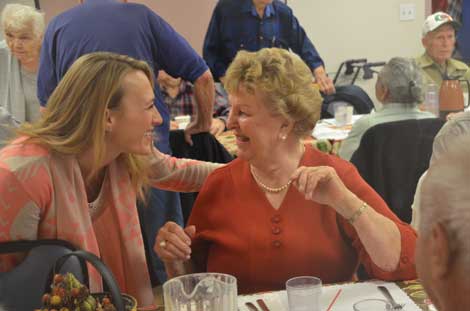For the love of teaching
Some school teachers retire the day they become eligible, having tracked that important date for years. However, there are teachers still working in the Puyallup School District well past the age of retirement with no plans of hanging it up in the near future.
At Woodland Elementary School, Marcia Madsen, 70, is still teaching kindergarten.
When asked what she liked about it, Madsen’s sense of humor shined through when she replied, “What is not to like about 5-year-olds? The only reason I’m the teacher is because I’m the tallest.â€
Madsen said one of the gifts she receives from the kids is the pure joy of learning from them every single day.
“It is a passion that I can be with these little people and help them to put all their knowledge into these little pockets that we call education. That is why I love it,†she said.
Madsen has taught at Woodland for the last 22 years and has seen a lot of changes.
“Back in 1967 when I had my first teaching job, it was graham crackers and milk and a nap, and now we have gone to all-day school, reading, writing, math and science,†she said.
Madsen said she didn’t go to kindergarten as a child, and many other children opted out as well because it wasn’t mandatory to attend school at that age. Now, 5-year-olds are prepared and anxious to attend all day kindergarten.
“They are just children, but we can sure introduce them to a lot of wonderful experiences and memory-making,†she said.
Madsen enjoys the curiosity of the kindergarten students and their eagerness to learn. She and her husband have six children, and when the last one headed to kindergarten, she went back to teaching.
Madsen said she doesn’t put much thought into retirement.
“I plan to work until I can’t work any more,†she said.
Sixty-six-year-old Lanny Gleason has worked as a teacher for the last 28 years. Gleason, who is the vocational coordinator for the Puyallup district, says he loves his job and isn’t retiring any time soon.
Working with students with disabilities who are ages 19 to 21 and have no clear career path, Gleason helps them define a goal and assists them in visiting various training sites in an effort to see what works for them.
“There is no perfect job, but working with business and industry and working with students and being able to see the end result is rewarding,†he said.
Gleason has seen many advances in the program that works with students with disabilities. “We can do a lot for kids that we couldn’t do before,†he said.
Gleason began his teaching career in Nebraska when the Individual Education Plan (IEP), a federal program to help special-needs students, was three pages long.
“It consisted of an objective page, a signature page and an invitation page,†said Gleason, adding that today the IEP is 22 pages long.
His job takes him to three high schools – Puyallup, Rogers and Emerald Ridge – with different offsite programs.
“The nice thing about Puyallup is it is a city, but there is a smalltown atmosphere,†he said.
There are currently 150 training sites where students have worked, and Gleason said they have a good network of training opportunities for students.
Joan Cronk, who wrote this article, is a freelance writer.


